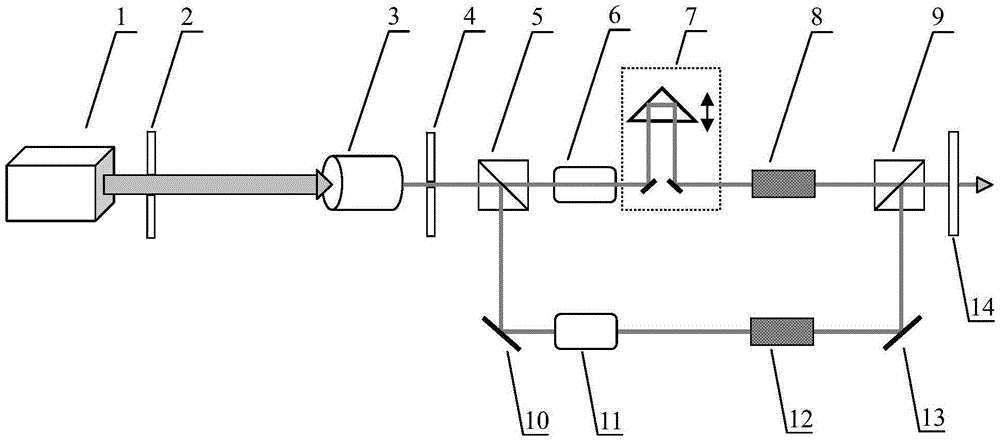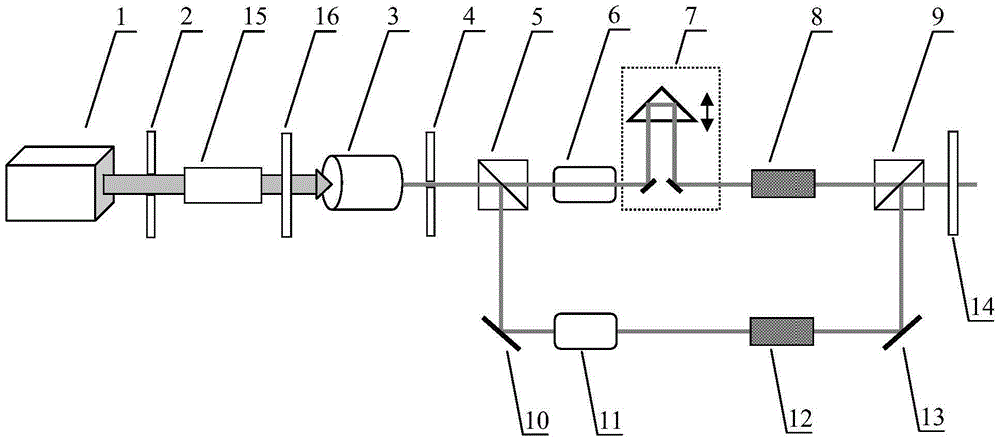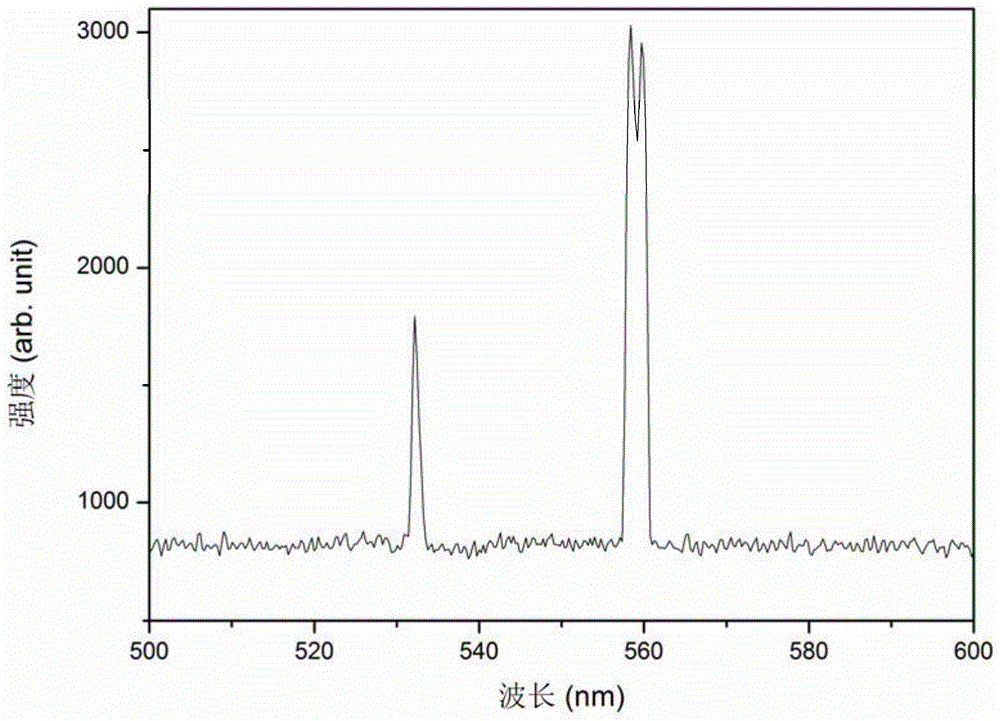Dual-wavelength laser based on dual-simulated Raman scattering media
A dual-wavelength laser and stimulated Raman scattering technology, which is applied in the direction of laser light using scattering effects, can solve the problems of difficult control of the mutual ratio of stimulated Raman lasers, limited application range, and large wavelength intervals, so as to avoid mode competition, Adjustable wavelength interval and high peak power effect
- Summary
- Abstract
- Description
- Claims
- Application Information
AI Technical Summary
Problems solved by technology
Method used
Image
Examples
Embodiment 1
[0043] A dual-wavelength laser based on double-stimulated Raman scattering media, including a pump source (1), a first aperture (2), a beam reduction system (3), and a second aperture (4) arranged in sequence along the optical path , a first attenuation system (6), a first color filter (14), the dual-wavelength laser also includes a Raman medium I (8) and a Raman medium II (12) with different Raman frequency shifts, the The first color filter (14) is arranged behind the Raman medium I (8) and the Raman medium II (12).
[0044] The dual-wavelength laser also includes a beam splitter (5), an optical path delay system (7), a beam combiner (9), a first mirror (10), a second attenuation system (11), a second mirror (13 ), the beam splitter (5) is arranged between the second aperture (4) and the first attenuation system (6), and the laser beam is divided into the first optical path by the beam splitter (5) and the second light path exits. Place the first attenuation system (6), th...
Embodiment 2
[0061] A dual-wavelength laser based on a dual-stimulated Raman scattering medium according to embodiment 1, the difference is that the dual-wavelength laser also includes a nonlinear crystal (15) and a second color filter (16), the The first aperture (2), the nonlinear crystal (15), the second color filter (16), and the beam shrinking system (3) are sequentially arranged along the optical path.
[0062] Both the first reflection mirror (10) and the second reflection mirror (13) are planar reflection mirrors with high reflection to light with a wavelength of 500-700nm.
[0063] The first color filter (14) is coated with a dielectric film that is highly reflective to 532nm wavelength laser and highly transparent to the stimulated Raman laser band (550-700nm).
[0064] The nonlinear crystal (15) is a KTP frequency doubling crystal, the wavelength after frequency doubling is 532nm, and the pulse width is 30ps.
[0065] The second color filter (16) is coated with a dielectric fil...
Embodiment 3
[0070] According to the dual-wavelength laser based on the double-stimulated Raman scattering medium described in Embodiment 2, the difference is that the first optical path delay system (7) and the Raman medium I (8) are placed The input mirror (17), the first output mirror (18) is placed between the Raman medium I (8) and the beam combiner (9), the second attenuation system (11) and the The second input mirror (19) is placed between the Raman medium II (12), and the second output mirror (20) is placed between the Raman medium II (12) and the second reflection mirror (13). .
[0071] The first input mirror (17) is coated with a dielectric film with high transparency to 532nm laser and high reflection to 558.4nm laser.
[0072] The first output mirror (18) is coated with a dielectric film that is highly reflective to 532nm laser and partially transparent to 558.4nm laser.
[0073] The second input mirror (19) is coated with a dielectric film with high transparency to 532nm l...
PUM
 Login to View More
Login to View More Abstract
Description
Claims
Application Information
 Login to View More
Login to View More - R&D
- Intellectual Property
- Life Sciences
- Materials
- Tech Scout
- Unparalleled Data Quality
- Higher Quality Content
- 60% Fewer Hallucinations
Browse by: Latest US Patents, China's latest patents, Technical Efficacy Thesaurus, Application Domain, Technology Topic, Popular Technical Reports.
© 2025 PatSnap. All rights reserved.Legal|Privacy policy|Modern Slavery Act Transparency Statement|Sitemap|About US| Contact US: help@patsnap.com



